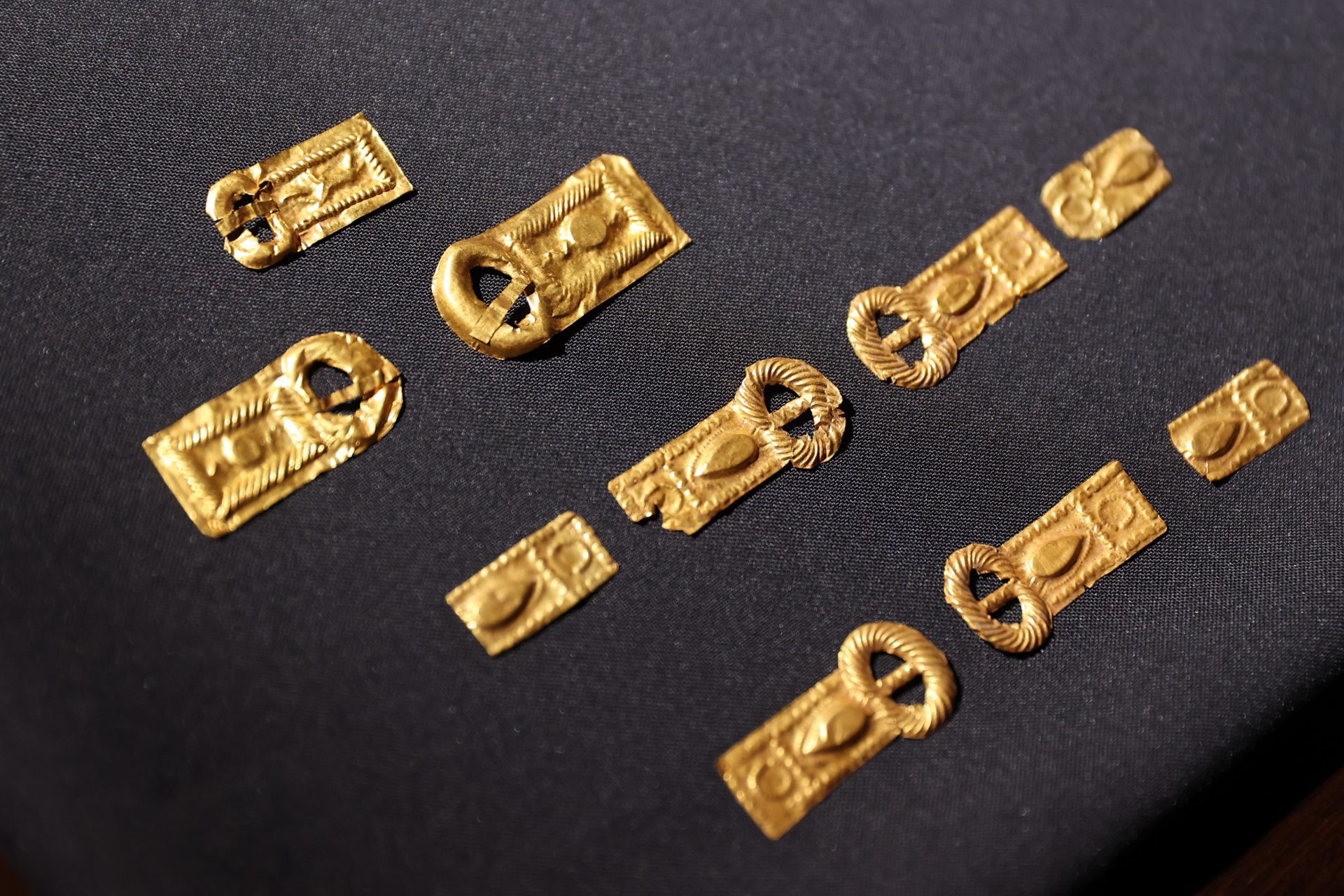Excavations by the Phanagoria Archaeological Expedition, supported by the Oleg Deripaska Volnoe Delo Foundation, have uncovered treasures of the ancient inhabitants of the Taman Peninsula, located in the Black Sea Region in the present-day Krasnodar Krai of Russia.
The researchers uncovered a cache of artefacts in a warrior’s burial, containing an ornate Iranian sword from the Migration Period during the 4th to 6th century AD. Also discovered are pieces of a harness, buckles, and belt tips, as well as high status items such as glass jugs, wooden and metal utensils, and wooden boxes with decayed cloths.
The sword suggests a political and cultural connection with the Sassanian or Neo-Persian Empire from modern Iran and Iraq, likely given as a diplomatic gift or taken as a military trophy.
Commenting on the discovery, a member of the project stated: “There is no doubt that this person was a representative of the elite of Phanagoria and was a bearer of the military aristocratic culture of the Bosporan Kingdom in the Migration Period.”

The study also excavated a burial site from the 1st century AD within the Phanagorian necropolis, containing the remains of a woman who had a silver medallion placed on the lower part of her chest.
The medallion is decorated with zodiac signs and depicts Aphrodite, the ancient Greek goddess associated with love, lust, beauty, pleasure, passion, and procreation. Such medallions were widespread in the territory of the Bosporan Kingdom as early as 2nd century BC and were used as brooches, accessories that adorned hats and other headgear, or as pendants.

Within the burial are several items of jewellery, including: two rings with images (poorly preserved, probably with images of cornucopia and Eros with wings) and two silver earrings with pendants in the form of doves that relate to the cult of Aphrodite, suggesting that the burial belonged to a cult priestess or worshiper. Also uncovered was a red clay jug with a twisted handle, iron scissors with a bronze handle, a bronze mirror and a bead string containing 157 pieces.
During this period, the ancient city of Phanagoria was a Greek colony, first founded in the Taman peninsula by Teian colonists in the 6th century BC after a conflict with the Persian king Cyrus the Great. The city grew into a major trading centre, that along with the associated necropolis covers an area of 2223.95 acres.
Earlier this year, the project discovered treasure hoards within Phanagoria and other settlements of the Taman Peninsula, indicating that the hoards were deposited by the medieval inhabitants in response to periods of conflict or the threat of invasion. The deposits contained on average, 30-80 Bosporan coins, presumably for everyday purchases, while bigger stashes with 1000 or more coins were presumably the culminated life savings.
Header Image Credit : Vitaly Timkiv, Oleg Deripaska’s Volnoe Delo
The Phanagoria Archaeological Expedition is a project by the Institute of Archaeology of the Russian Academy of Sciences and is being fully sponsored by the Oleg Deripaska’s Volnoe Delo Foundation since 2004.
Part of our mission statement at HeritageDaily is to provide independent, impartial and honest journalism. With respect of this, and the monetary gain from promoting state funded projects by the Russian Academy of Sciences, we support the Ukrainian people in their struggle and have donated to the Ukraine Humanitarian Appeal to help the DEC charities provide for the displaced and refugees caused by the conflict.







